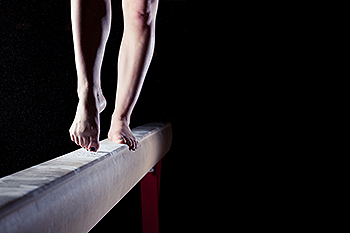
Ankle and foot injuries are common among gymnasts. This makes sense given that this sport has so many high-impact moves and repetitions. With early specialization, year-round training, and younger people doing gymnastics, injuries can be more common than need be. Young gymnasts may not be developed enough to have the physical preparation to protect their ankle joints and open growth plates cause more injuries to happen to them. Proper progression of exercise, coaching, and conditioning before workouts, can reduce injuries in this sport. Strength training, including lifting weights, can be helpful in handling high-impact forces. Adopting science-based landing mechanics using a squat-based landing with feet and hips wide apart can also dissipate high-force impacts. If you or your child participates in gymnastics, it might be beneficial to speak to a podiatrist to learn more about reducing injuries before participating in this activity.
Sports related foot and ankle injuries require proper treatment before players can go back to their regular routines. For more information, contact Bill Brown, DPM of Brown Podiatry. Our doctor can provide the care you need to keep you pain-free and on your feet.
Sports Related Foot and Ankle Injuries
Foot and ankle injuries are a common occurrence when it comes to athletes of any sport. While many athletes dismiss the initial aches and pains, the truth is that ignoring potential foot and ankle injuries can lead to serious problems. As athletes continue to place pressure and strain the area further, a mild injury can turn into something as serious as a rupture and may lead to a permanent disability. There are many factors that contribute to sports related foot and ankle injuries, which include failure to warm up properly, not providing support or wearing bad footwear. Common injuries and conditions athletes face, including:
- Plantar Fasciitis
- Plantar Fasciosis
- Achilles Tendinitis
- Achilles Tendon Rupture
- Ankle Sprains
Sports related injuries are commonly treated using the RICE method. This includes rest, applying ice to the injured area, compression and elevating the ankle. More serious sprains and injuries may require surgery, which could include arthroscopic and reconstructive surgery. Rehabilitation and therapy may also be required in order to get any recovering athlete to become fully functional again. Any unusual aches and pains an athlete sustains must be evaluated by a licensed, reputable medical professional.
If you have any questions please feel free to contact our office located in Scranton, PA . We offer the newest diagnostic and treatment technologies for all your foot and ankle needs.
